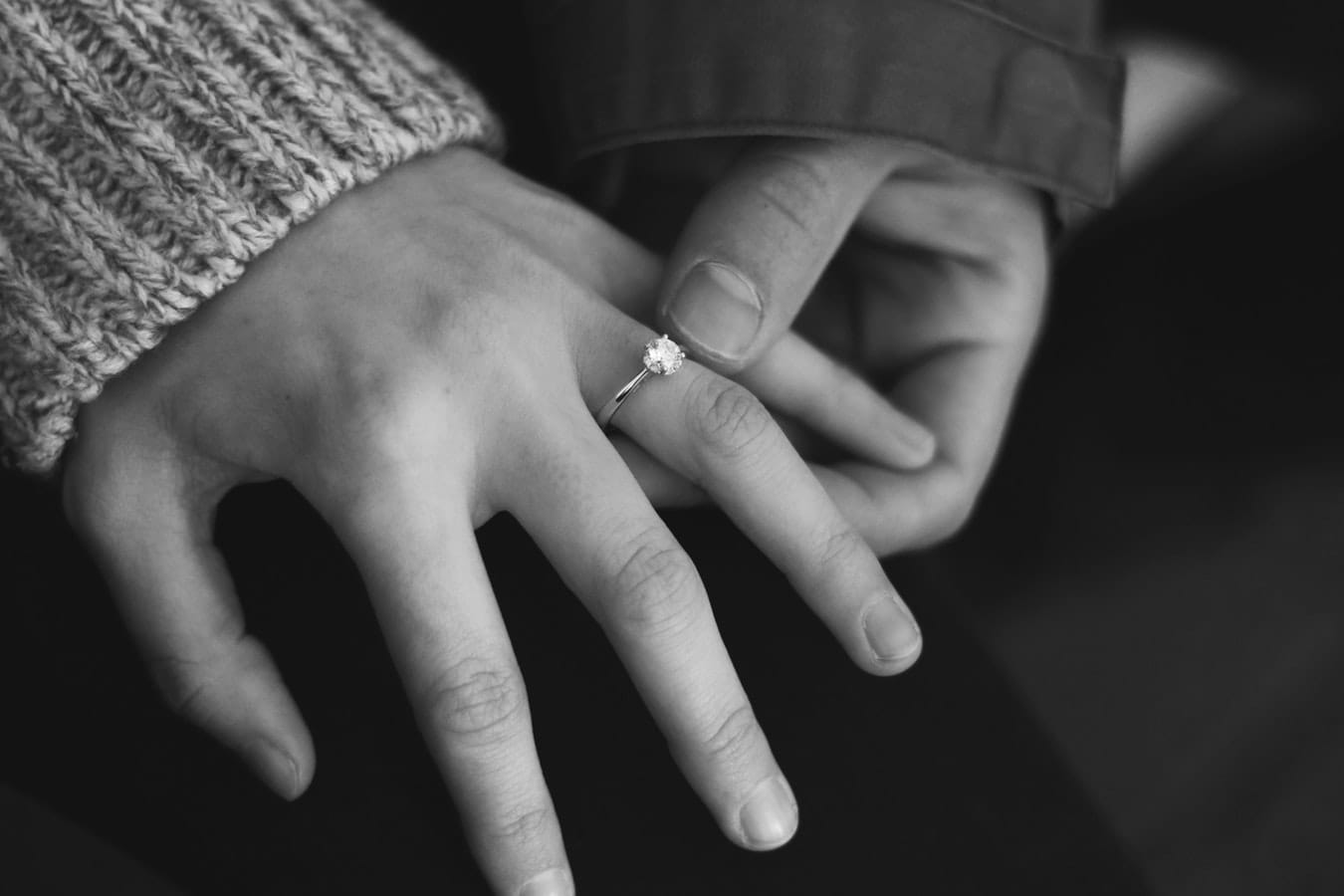
Table of Contents
As Jewelry Shopping Guide editors, we write about things that we love and we think you’ll like too. We often have affiliate partnerships, and may generate some revenue from these links at no cost to you.
The Old European cut is the predecessor of today’s modern round brilliant cut and was very popular during the late 1800s. It’s the most classic of the antique cuts and at its time, the best in diamond cutting innovation.
With every stone cut by hand, each Old European cut had its own ‘personality’ and no two were ever exactly alike.
And now, with the renewed interest in antique cuts and all things vintage, many are turning towards Old European cut for engagement rings and other jewelry.
Intrigued?
Keep reading! We’ll take a look at whether it’s a good idea to buy an Old European cut diamond over a modern cut.
What is the Old European Cut?
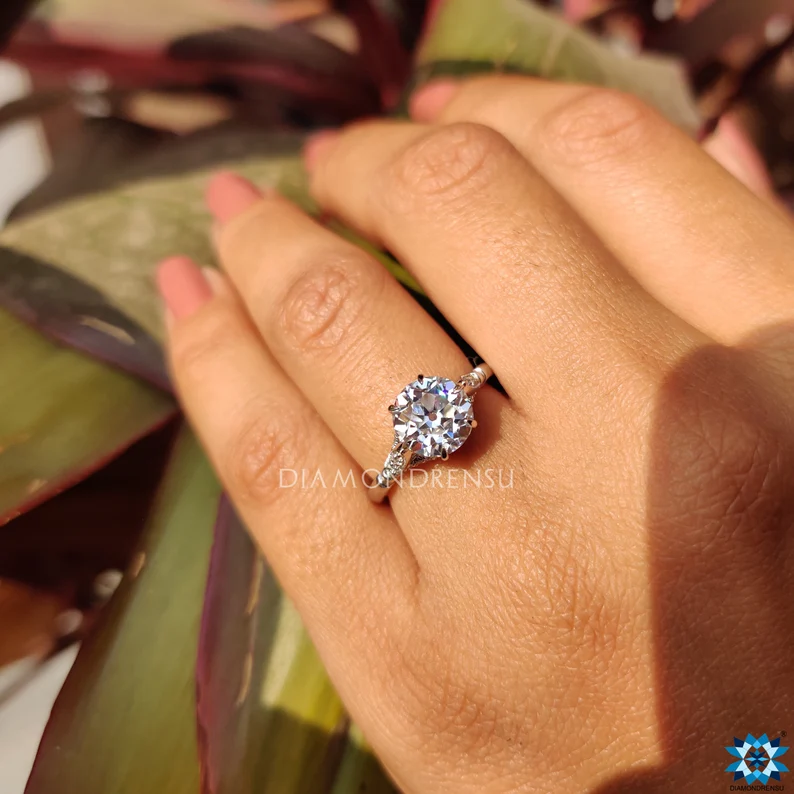
People have always had a penchant for well-cut round diamonds and prior to the precision cutting technology we have today, each diamond had to be cut by hand. This made the diamonds of that time unique and gave each stone a ‘personality’.
The Old European cut was similar to the round brilliant we have today in a number of ways. Like the modern round cut, the Old European cut has 58 facets. However, where these facets are placed, their proportions and sizes are different. The end result is a diamond that looks similar to the modern round cut but is still very distinct.
Here are the specifications that distinguishes the Old European cut:
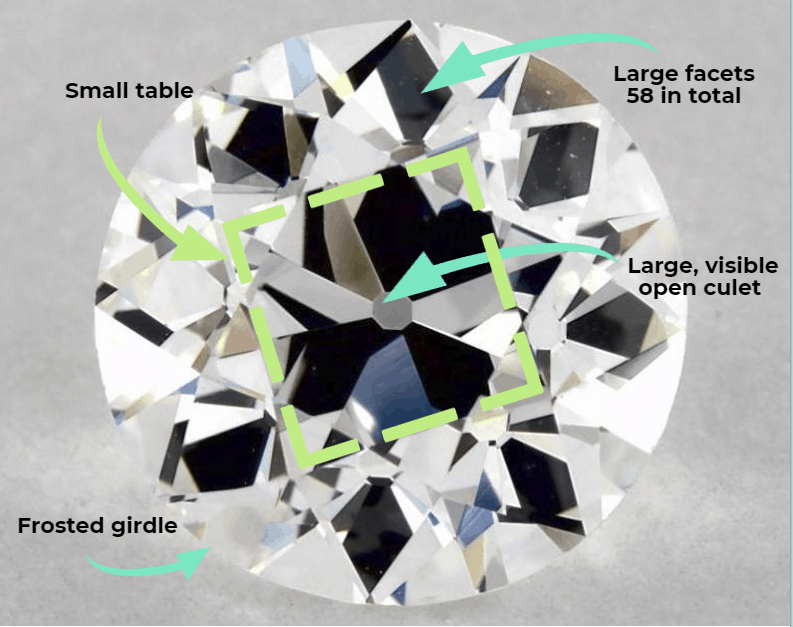
- 58 facets, larger than today’s brilliant cut facets
- Higher crown that gives the diamond depth
- A small table, much smaller than modern round cuts
- Large, open culet which can be seen from the top view of the diamond
- A frosted girdle (as opposed to polished girdles used today).
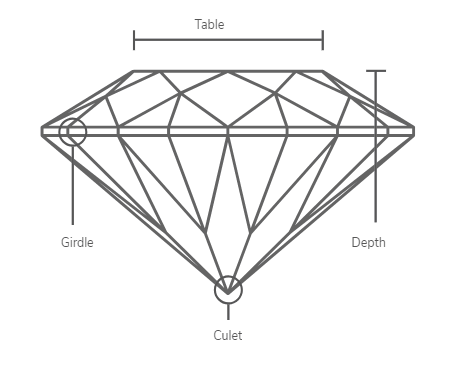
Old European Cut Brilliance and Fire
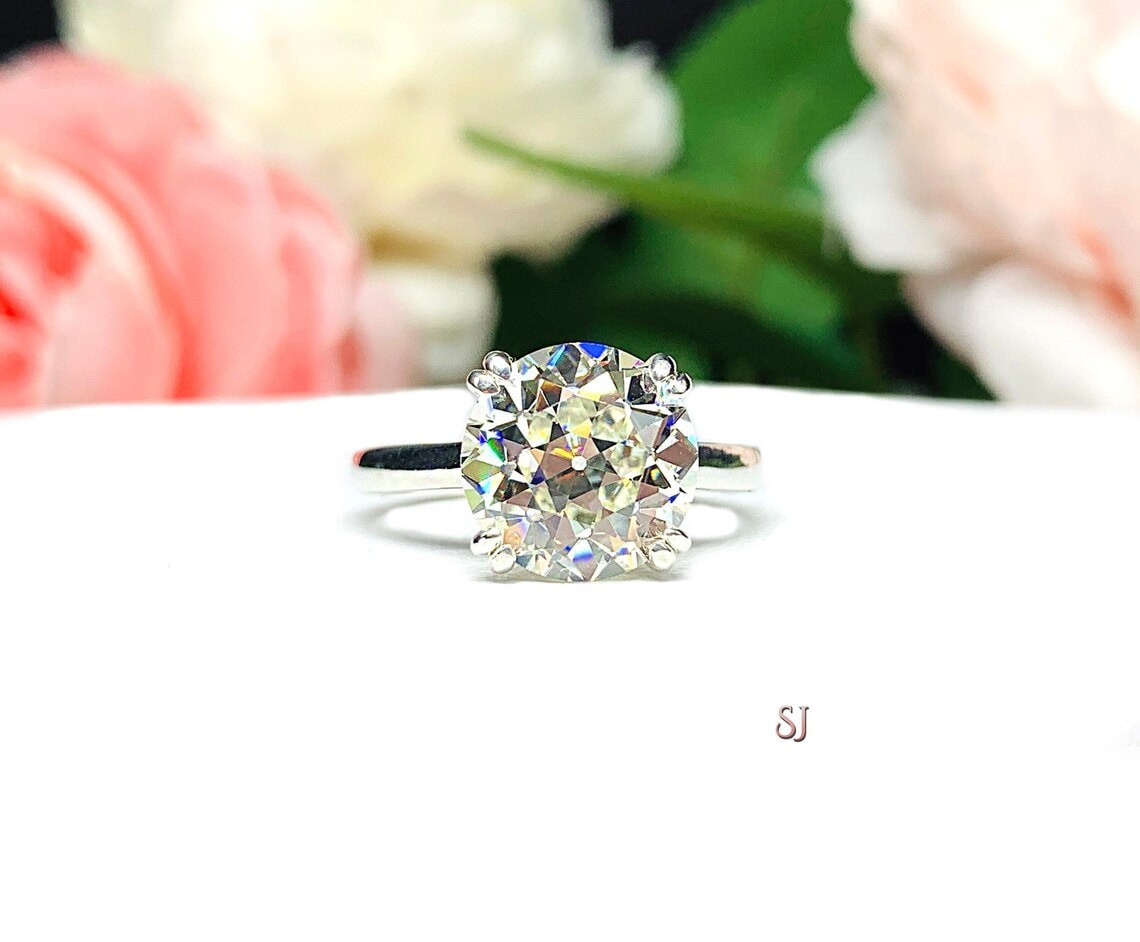
Lighting was a factor that diamond cutters at the time took into consideration and one which influenced the cut specifications. Unlike modern cuts, which are faceted to sparkle under electric lights, the Old European cuts were cut to shine under candlelight. To see the full beauty of the Old European cut diamond, hold it under candlelight and you’ll see it glow in a way that no other diamond cut can.
Old European cuts also have a more interesting contrast of light and dark, visible across the surface of the stone than modern cuts. These patches of contrast are larger and more squarish, whereas modern round brilliant cuts display a more compact sort of contrast.
The sparkle and fire that these cuts give off are different to modern cuts as they were cut to show off their color rather than their brilliance. When you hold an Old European cut under lights, there are broader and more intense flashes of color (known as fire) due to the larger facets. Modern cuts don’t have this level of inner fire, probably due to the angles that today’s cuts exhibit.
Why Choose an Old European Cut?
Of all the antique cuts, the Old European cut remains the most classic and sought after. Until recently, jewelers who got their hands on Old European cuts would re-cut them into modern round brilliants. But as the demand for these cuts rise, they’re now being preserved and set in beautiful settings to accentuate their beauty.
Why is the demand for these cuts rising, you might wonder?
Part of its appeal is in its simplicity and warmth. Old European cut diamonds have a different aesthetic to modern shapes. They’re unique and for someone who wants to stand out from the crowd, they offer a great choice.
Old European cuts are also conflict-free stones, as you are repurposing the diamond rather than buying a new mined one. They are rare and because most of these diamonds are available from estate sites, they’re not as expensive as modern diamonds of comparable sizes.
What Are the Drawbacks of Choosing the Old European Cut?
The most obvious con is that these cuts don’t sparkle in the way that modern diamond cuts do. We tend to associate diamonds with sparkle and brilliance and that’s why most people opt for these stones. An old cut like this will simply not sparkle that way.
Another con is that the Old European cuts are not perfect. The facets are not always precise and if you’re someone who values perfection, the Old European cut may not ‘cut’ it for you.
One last con.
You’ll find it harder to find Old European cut diamonds and jewelry than you would a modern cut. A simple search on the Blue Nile website, for example, brings up over 130,000 round diamonds! Old European cuts are scarcer, and options will be more limited. However, you might argue that this very detail is an advantage of the cut.
What About Old European Cut Engagement Rings?
One of the reasons that make the Old European cut a good choice for engagement rings is its uniqueness and the fact that it holds history. If you purchase an antique Old European cut, rather than a modern replica, you know there’s a backstory to that cut.
The Old European cut was highly popular during the Victorian, Georgian, Edwardian, and Art Deco periods, and was set into some stunning designs. Here are some antique engagement rings to inspire you:
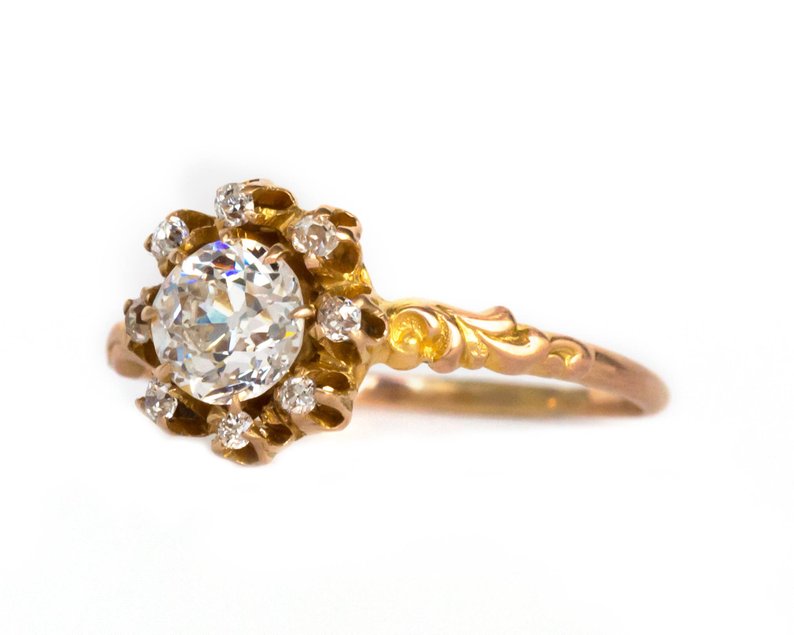
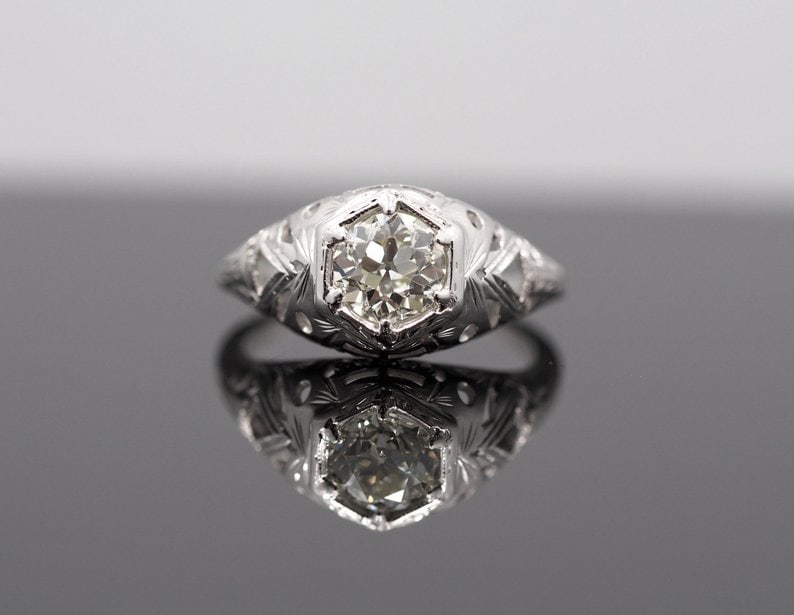
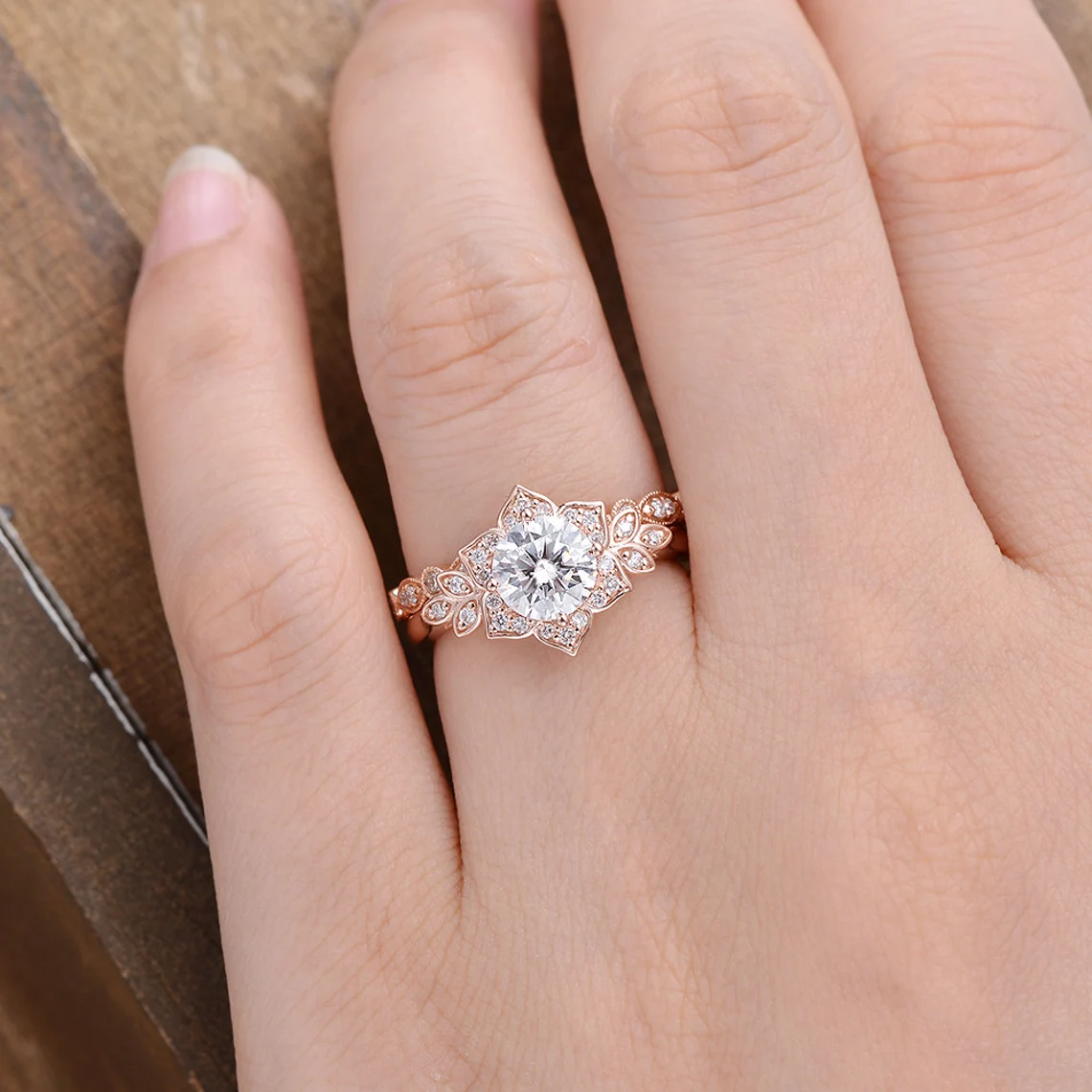
Old European Cut vs. Old Mine Cut
These two cuts are quite similar but there are distinct differences between the two. First and foremost, the Old Mine cut is the older cut and was around for at least a 100 years before the Old European cut.
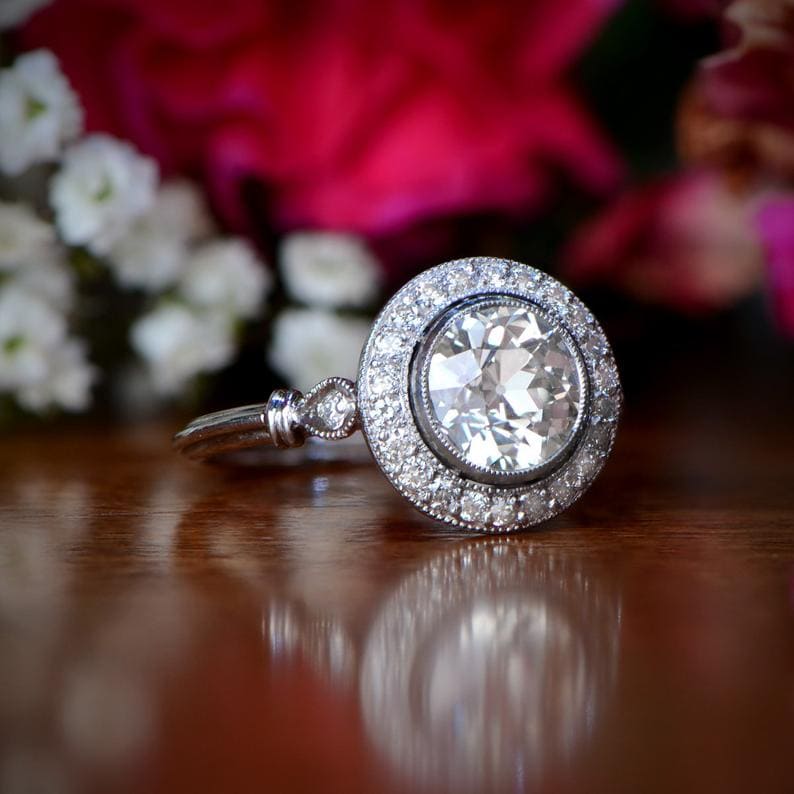
The Old Mine cut dates back to the 1700s, was very popular during the Georgian and Victorian eras and also has 58 facets. However, the Old Mine cut has a squarish girdle, as opposed to the Old European cut which is more roundish. The Old European cut is a step towards the round brilliant and an improvement on the old mine cut.
Old European Cut Moissanite
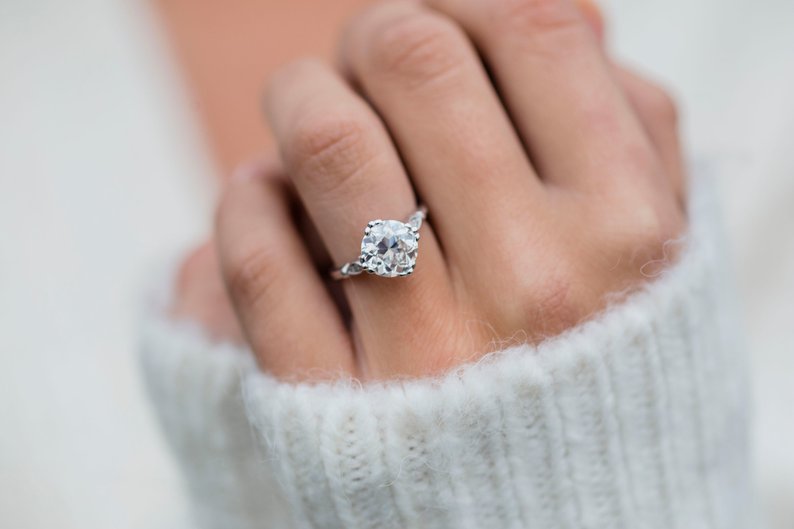
While most people want diamonds, some prefer to go for moissanite, known as the ‘space diamond’. Moissanites are less expensive (although not cheap) and more environmentally friendly than diamonds, with even more fire and sparkle. They make a great diamond substitute and are an excellent choice for engagement rings.
Because of the interest in Old European cuts, you can find moissanite cut into this antique shape too. This allows you to still choose old diamond cuts but in a more budget-friendly way.
Read more about why moissanite may be a better choice than diamonds in our comparison article here.
Where to Buy Old European Cuts
As I mentioned above, many original Old European cuts were reshaped into modern round cuts, because the modern round cut was deemed to be more desirable. Today, thankfully, this way of thinking has changed.
You can still find original Old European cuts in antique jewelry stores. Online platforms like Etsy and Amazon are great places to begin your search for this cut. Looking for a replica cut is the next best thing, and you’ll find that many diamond retailers offer modern replicas of antique diamond cuts.
We recommend starting your search on Amazon and Etsy as they have a good range of Old European cuts on offer. Both Amazon and Etsy have vintage and modern engagement rings and jewelry designs featuring Old European cuts available from multiple independent jewelry boutiques.
As each Amazon and Etsy shop has its own polices, it might take some time to review all their details ahead of making a purchase, but that’s usually time well-spent.
Final Words….
So, to go back to that question we began with:
Should you buy an Old European cut diamond?
Unfortunately, there is no direct answer to this. Your preferences will ultimately decide this question for you. While some prefer the exacting precision of modern cuts, others lean towards the romance and individuality of an antique cut like the Old European cut.
Go with what you feel is beautiful and the sort of sparkle that you want your diamond to emit.









